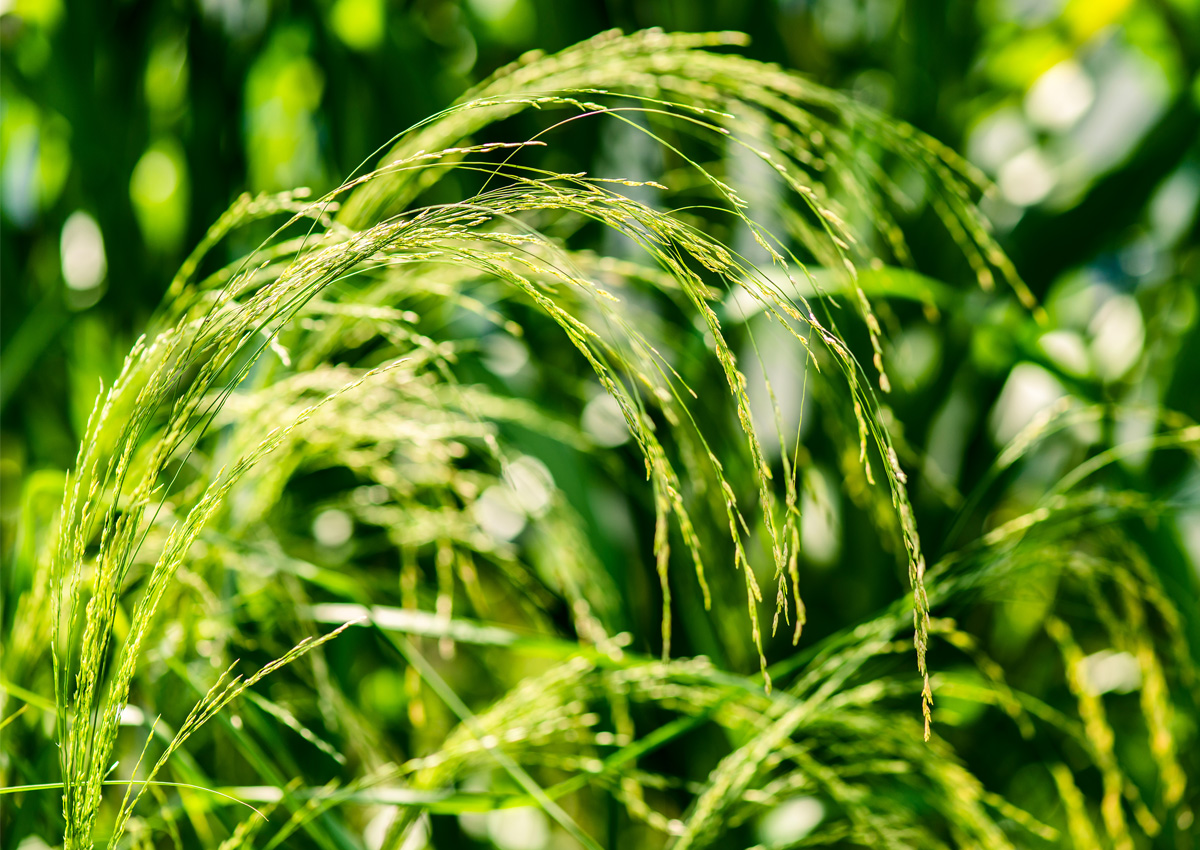
Scientists Unlock Secrets of Teff, Ethiopia's Superfood
June 24, 2020| |
Scientists have mapped the genetic diversity of teff, an ancient grain originally from Ethiopia, and a staple crop for 50 million people in the country. Teff has been increasingly popular worldwide, touted as a superfood for its gluten-free, high fiber and protein, and low-sugar properties. However, future climate scenarios predict a decrease of the crop's cultivation suitability in Ethiopia, with a model predicting teff cultivation to diminish by 2070.
In a study published in Agriculture, Ecosystems & Environment, the scientists have, for the first time, mapped the grain's massive diversity, consisting of 3,850 known types from across Ethiopia. Each has unique characteristics, or "traits," allowing them to cope with different environmental conditions.
Depending on the areas where they are grown, varieties might be heat or drought-tolerant; or produce more grain. Now, that information has been pinpointed by researchers and stored in individual "passports" for each type, which can be used to breed more resilient varieties. Teff can withstand temperature extremes from 2°C to 38°C; some varieties cope with almost 2,000mm of annual rainfall; others only tolerate 542 mm. There are red, brown, and white types, each containing varied nutrients and flavors that are used for different dishes.
More details available in this article, or read the paper's highlights and abstract in Agriculture, Ecosystems & Environment.
| |
You might also like:
- Ethiopia Approves Environmental Release of Bt Cotton and Grants Special Permit for GM Maize
- Ethiopia to Commercialize Bt Cotton in Two Years
- Pocket K No. 15: 'Omics' Sciences: Genomics, Proteomics, and Metabolomics
Biotech Updates is a weekly newsletter of ISAAA, a not-for-profit organization. It is distributed for free to over 22,000 subscribers worldwide to inform them about the key developments in biosciences, especially in biotechnology. Your support will help us in our mission to feed the world with knowledge. You can help by donating as little as $10.
-
See more articles:
-
News from Around the World
- Redefinition and Harmonization in Biotech Regulation Necessary, Experts Say
- Scientists Unlock Secrets of Teff, Ethiopia's Superfood
- GM Yeast Found to Effectively Control Tsetse Flies
- Oxitec's Friendly™ Mosquito Approval Published in Federal Register; Unanimous Approvals in State of Florida
- Sugar from GM Sugarcane at Par With That from Conventional Sugarcane
- Researchers Show How Fungal Pathogen Disables Plant Defense Mechanism
- UK Environment Secretary Proposes Use of Gene Editing to Decrease Farmers' Reliance on Pesticides
-
Research Highlights
- Researchers Pinpoint Genes Involved in Rice Blast Resistance
-
Plant
- Experts Report a Multi-functional Genome Editing Method for Plants
-
Health
- MIT-Engineered Peptide Targets COVID-19
-
Read the latest: - Biotech Updates (December 17, 2025)
- Gene Editing Supplement (December 17, 2025)
- Gene Drive Supplement (February 22, 2023)
-
Subscribe to BU: - Share
- Tweet

